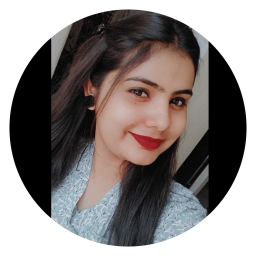Well, you have come to the right place. India's anti-British liberation struggle drew a large number of people from all around the country.
From Kashmir to Kanyakumari, Assam to Gujarat, thousands of men and women fought together to oppose the atrocities committed by the British Raj.
Behind the 15th of August, 1947, Independence Day celebrations, there lies a long and bloody history of furious rebellions, conflicts, and movements carried out by thousands of brave Indian freedom warriors.
All of India's freedom fighters battled, struggled, and even gave their lives to free the country from British domination.Many revolutionary freedom warriors took the lead in organizing the campaign that led to India's independence,
And their actions were important in achieving it. Their contributions to India's freedom struggle have been immortalized in the thoughts of every Indian, despite their diverse views ranging from moderate to radical.
It was not easy for the country to struggle and expel foreign rulers, nor was it easy to unite several princely kingdoms, tribes, and people of various languages and cultures into the concept of a single nation.
In this guide, we ranked and reviewed the freedom fighters names, along with our top 3 choices, so that you can pick the best one for you.
Freedom Fighters of India
1. Kunwar Singh:
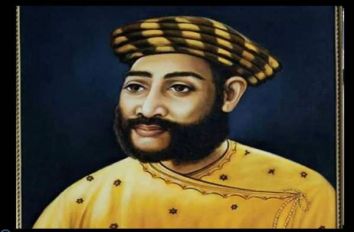
Kunwar Singh was born in April 1777 to the Maharaja and Maharani of Jagdispur, which is today located in Bihar's Bhojpur district.
Due to his imposing bravery, he was known as Veer Kunwar Singh.
At the age of 80, Kunwar Singh led a troop of warriors against the British in Bihar.
He used guerrilla
warfare techniques to attack British troops, and he was victorious.
Kunwar Singh will be remembered for his audacity, enthusiasm, and honorable bravery as a young man. Babu Veer Kunwar Singh was his full name.
Kunwar Singh's passion and patriotism were depicted in Anant Pai's acclaimed book about him.
Date of birth: 13 November 1777
Date of death: 26 April 1858
Nick name: Babu Kunwar Singh
2. Mangal Pandey:
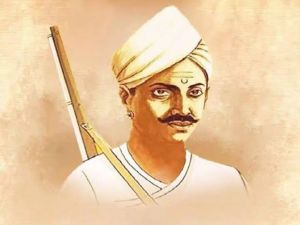
Mangal Pandey was born at Nagwa on July 19th, 1827. Mangal Pandey, a well-known Indian freedom warrior,
is often considered the predecessor of India's first war of independence, the 1857 struggle against the British.
On March 29, 1857, while serving as a soldier for the British East India Company,
Pandey conducted the first attack on English
authorities, which marked the start of the Indian uprising, and even attempted to kill them.
On April 18, he was apprehended and sentenced to death. Amaresh
Misra's acclaimed book The True Story of an Indian Revolutionary highlights Mangal Pandey's contribution to the freedom
movement.
Date of birth: 19 July 1827
Date of death: 8 April 1857
3. Vinayak Damodar Savarkar:
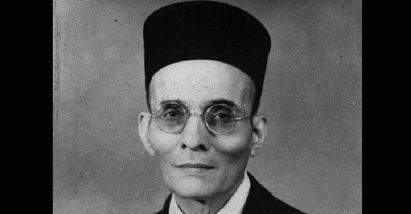
Vinayak Damodar Savarkar was an Indian revolutionary and activist who was born in Bhagur in 1883.
Abhinav Bharat Society and the Free India Society were founded by him. Swatantryaveer
Savarkar was his given name.
He also published an article titled 'The Indian War of Independence,' which detailed the challenges of the 1857 Indian revolt.
In addition, he founded the Hindu Mahasabha party. He graduated from City Law School. Fergusson College and Mumbai University are where he received his higher education.
Vinayak Damodar Savarkar's book Hindutva: Exploring the Idea of Hindu Nationalism explains the ideals of Hindu nationalism and the freedom fight.
Date of birth: 28 May 1883
Date of death: 26 February 1966
Nick name: Veer
4. Dadabhai Naoroji:
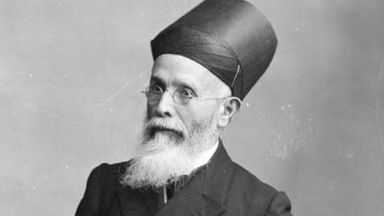
The Indian National Congress was founded by DadabhaiNaoroji, who was born in Navsari on September 4, 1825.
Dadabhai Naoroji rose to prominence as a result of his well-known viewpoint on the economic implications of British rule in India.
In one of his writings, he argued that British colonisation in India was tantamount to plundering the country's wealth.
Dadabhai Naoroji had the honour of presiding over the yearly sessions of the Indian National Congress in 1886, 1893, and 1906.
Poverty and Un-British Rule in India is one of his most well-known articles. Dadabhai Naoroji is also known as the "Unofficial Ambassador of India" and the "Grand Old Man of India."
Date of birth: 4 September 1825
Date of death: 30 June 1917
Nick name: Grand Old Man of India/ Unofficial Ambassador of India
5. Bhagat Singh:

Bhagat Singh was born in Banga, Pakistan, on September 28, 1907. He was a member of the Indian freedom fighters' radical revolutionary wing.
He joined and became an active member of the Hindustan
Republican Association.
He created the Naujawan Bharat Sabha in 1926 to unite peasants and workers to revolt against the British.
He formed many study circles in Lahore with the support of Sukhdev, where he conducted political discussions. He was altered by the Chauri-Chaura
Massacre, and his battle for liberation became more intense.
'Shaheed Bhagat Singh' was his popular moniker. Bhagat Singh's classic book, "Why I Am an Atheist and Other Works," chronicles his revolutionary effort. He undoubtedly deserves a place in the list of top 10 freedom fighters of India.
Date of birth: 27 September 1907
Date of death: 23 March 1931
6. K.M. Munshi:

K.M. Munshi was born in Bharuch on December 30, 1887.He also joined the Indian National Congress and the Swaraj Party.
He founded Bharatiya Vidya Bhavan and became a prominent independence fighter after joining Mahatma Gandhi in the Salt Satyagraha and the Quit India movement.
He was a staunch supporter of Sardar Patel, Gandhi, and Sayajirao Gaekwad, and he was frequently arrested for his anti-colonial activities.
He was an Indian independence movement activist, politician, writer, and educationist from Gujarat state who went by the pen name Ghanshyam Vyas.
K.M. Munshi: An Architect of Modern India, authored by Yash Mishra, is a well-known book that recounts his role in the Indian independence movement.
Date of birth: 30 December 1887
Date of death: 8 February 1971
Nick name: Ghanshyam Vyas
7. Jawaharlal Nehru:
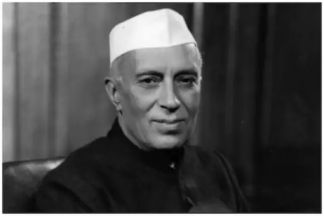
On November 14, 1889, Pandit Jawaharlal Nehru was born in Prayagraj, India.
He was Motilal
Nehru's and Swarup
Rani
Nehru's only child. Mahatma
Gandhi's struggles to liberate India from British rule influenced his desire for India's independence.
He became a member of the liberation movement, the President of the Indian National Congress,
and India's first Prime Minister after independence. He was given the nickname Chacha Nehru because he enjoyed children, and his birthday is known as Children's Day.
He became a member of Annie Besant's 1916 Home rule Movement. Brecher Michael's book Nehru: A Political Biography is a well-known account of Nehru's patriotism.
Date of birth: November 14, 1889
Date of death: May 27, 1964
Nick name: Chacha
8. Ashfaqulla Khan:
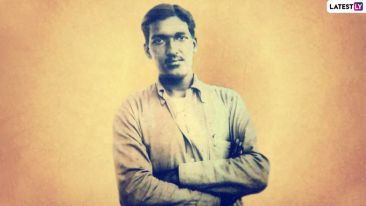
Ashfaqulla Khan was born in the Shahjahanpur area of Uttar Pradesh on October 22, 1900.
Ashfaqulla Khan grew up during Mahatma Gandhi's non-cooperation campaign.
He was a major member of the Hindustan Republican Association, like Bismil and Chandrashekhar.
With the help of his comrades, he committed the well-known train heist at Kakori
Khan, which resulted in his execution by the British.
In the Chauri
Chaura event in Gorakhpur, he was one of the primary conspirators. The Kakori Conspiracy of 1925 was a well-known plot.
Himanshu Joshi's 'Ashfaq Ullah Khan Hardcover' is a well-known book on his involvement in the freedom movement.
Date of birth: 22 October 1900
Date of death: 19 December 1927
9. Tantia Tope:
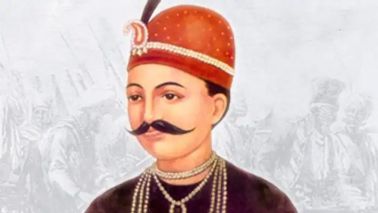
Tantia Tope was born in 1814 in Yeola, and in 1857, he led one of the great classic Indian revolts.
He commanded a troop of soldiers to fight the British and end their control.
He served as General and continued his struggle under terrible circumstances as a devoted disciple of Nana Sahib.
General Windham was forced to leave Kanpur, and he assisted Rani Lakhsmi Bai in restoring Gwalior. Ramachandra
Pandurang Tope was his original name.
Tantia Tope was described as "a man of medium stature, wheat complexion. Parag Tope's famous book, 'Tatya Tope's Operation Red Lotus,' details his contributions to the independence movement.
Date of birth: 16 February 1814
Date of death: 18 April 1859
Nick name: Tantia Tope
10. Sardar Vallabhbhai Patel:
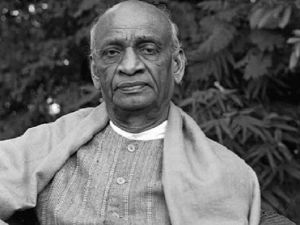
On the 31st of October, 1875, Vallabhbhai Patel was born in Nadia. He was a top leader of the Indian National Congress and one of the most powerful and determined Indian liberation fighters.
After his valiant role in the Bardoli Satyagrah, he was given the title "Sardar."
He earned the nickname "India's Iron Man" as a result of his valiant efforts.
He was one of Gujarat's
most
powerful
leaders, organising anti-British peasant uprisings based on Gandhi's nonviolent ideas.
Sardar Vallabhbhai Patel: A Biography, written by Kaushal Goyal, is a well-known book about his struggle against British authorities. After independence, he served as India's first home minister and deputy prime minister.
Date of birth: 31 October 1875
Date of death: 15 December 1950
Nick name: Unifier of India
11. Lala Lajpat Rai:
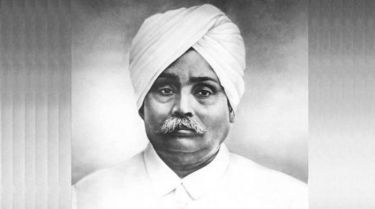
Lala Lajpat Rai was born in the Punjabi town of Dhudike on January 28, 1865.
Punjab Kesari was his nickname. He was a member of the Indian National Congress's extreme wing.
He founded the Lal-Bal-Pal group with band Bal Gangadhar Tilak, and they carried out various revolutionary acts.
After leading the Non-Cooperation Movement and the Punjab Protest against the Jalliawala Bagh event in 1920, he became a popular leader.
He died in a savage Lathi charge by Britishers during a Simon
Commission demonstration in 1928. His famous work "THE ARYA SAMAJ" is about the Indian nationalism movement.
Date of birth: 28 January 1865
Date of death: 17 November 1928
Nick name: Punjab Kesari
12. Ram Prasad Bismil:
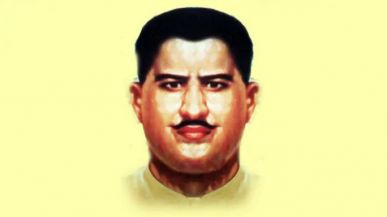
Ram Prasad Bismil was a well-known young revolutionary who gave his life in the service of his country.
In Shahjahanpur, he was born on June 11, 1897. Along with Sukhdev, he was a well-respected Hindustan Republican Association member.
He also took part in the historic Kakori train robbery, for which he was sentenced to death by the British authorities.
He was a member of the Manipuri and Kakori conspiracies in 1918 and 1925, respectively. He was a nationalistic poet who used the pen names Ram, Agyat, and Bismil to write in Hindi and Urdu.
His autobiography, Atmakatha: Ramprasad Bismil, is a well-known book.
Date of birth: 11 June 1897
Date of death: 19 December 1927
Nick name: Bismil
13. Bal Gangadhar Tilak:
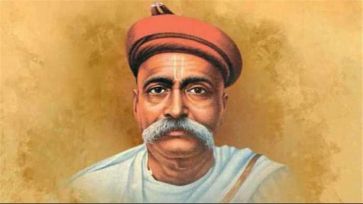
Bal GangadharTilak was a renowned Indian freedom warrior who was born on July 23, 1856, in Chikhali.
'Swaraj is my Birthright,' he famously said. To fight British rule, he created multiple defiant periodicals and built schools.
With Lala Lajpat Rai and Bipin Chandra Pal, he was the third member of the Lal-Bal-Pal.
Tilak constructed schools and published the Mahratta and Kesari newspapers to resist the English authorities. People dubbed him Lokmanya Tilak since he was regarded as one of the finest leaders.
He began the Swadeshi movement in 1905. "Bal Gangadhar Tilak: A Study" is a well-known book about his contributions to the freedom fight.
Date of birth: 23 July 1856
Date of death: 1 August 1920
Nick name: Lokmanya
14. Rani Lakshmi Bai:
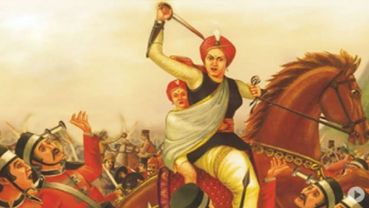
Rani Lakhsmi Bai, the Queen of Jhansi, was born in Varanasi on November 19, 1828.
She was a major figure in India's 1857 independence
rebellion.
Although she was a woman, she epitomised boldness and a daring attitude, encouraging hundreds more women to fight for freedom.
In the year 1858, she defended her palace with her newborn infant when it was overrun by British forces.
Manikarnika Tambe was her given name, and she was known as Manu. She was also noted for her unusual thoughts and fearlessness in defying social standards in front of the entire population.
Deepa Agarwal's book Rani Lakshmibai is a well-known book that highlights her involvement in the revolutionary cause.
Date of birth: 19 November 1828
Date of death: 18 June 1858
Nick name: Jhansi ki Rani
15. Bipin Chandra Pal:
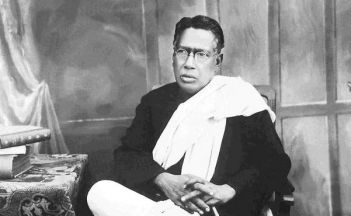
Bipin Chandra Pal, a prominent member of the Indian National Congress, was born in the Habiganj
District of Bangladesh in 1858.
During the Greatest Revolution against the British
Army, he is a remarkable revolutionary.
He was a member of the Indian National Congress and advocated for the abolition of imported products.
He opposed the partition of Bengal in 1905 and took part in the Swadeshi and non-cooperation activities. Later, he became a member of the Brahmo Samaj, which promoted widow remarriage.
Bipin Chandra Pal's classic book "The Soul of India: a Constructive Study of Indian Thoughts and Ideals" discusses the Indian liberation movement.
Date of birth: Bengal Tiger
Date of death: 20 May 1932
Nick name: Bengal Tiger
16. Chittaranjan Das:
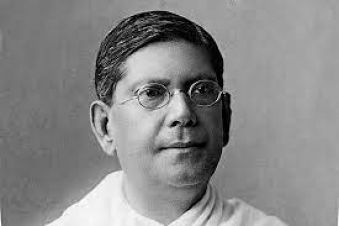
Chittaranjan Das was born in the Bangladeshi city of Dhaka on November 5, 1870.
Chittaranjan Das was a lawyer who founded the Swaraj
Party.
He was known as Deshbandhu and was a member of the Indian National Movement.
He was the major figure in the non-cooperation movement in Bengal.
Chittaranjan Das was very active in the Anushilan
Samiti's
operations. As part of his support for different anti-British movements in India, he published a newspaper called Forward, which eventually changed its name to Liberty.
He was the first mayor of the Calcutta
Municipal
Corporation. Hemendranath Das Gupta's book "DeshBandhu Chittaranjan Das" highlights his role in the independence fight.
Date of birth: 5 November 1870
Date of death: 16 June 1925
Nick name: Deshbandhu
17. Begum Hazrat Mahal:
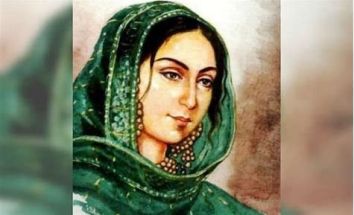
Begum Hazrat Mahal was born in Faizabad in 1820 and took part in the insurgency against British rule in 1857.
In the Pari Khana, she was renamed 'Mahak Pari,' and later became one of Nawab Wajid Ali Shah's brides under a contract.
One of her greatest accomplishments in the liberation war was uniting Hindus and Muslims to fight the British as a single army.
When her husband was overseas, she defended Lucknow alone, guiding the army. She also campaigned to prevent temples and mosques from being demolished before fleeing to Nepal.
Kenize Mourad's famous book "In the City of Gold and Silver: The Story of Begum Hazrat Mahal" describes her life's struggle.
Date of birth: 1820
Date of death: 7 April 1879
Nick name: Begum of Awadh
18. Lal Bahadur Shastri:
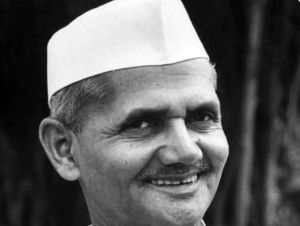
In Mughalsarai, Uttar Pradesh, Lal Bahadur Shastri was born in 1904.
The title of Shastri, which means Scholar in English, was bestowed upon him.
He was one of India's most active freedom fighters, taking part in Mahatma Gandhi's Quit
India, Civil Disobedience, and other satyagrahas.
He rose through the ranks of Home Minister after India's independence, eventually becoming Prime Minister in 1964. He dropped out of high school to become a member of the Non-Cooperation Movement as a youngster.
During his lifetime, Lal Bahadur Shastri was imprisoned by the British. Srivastava C.P. discussed his nationalist activity in ‘Lal Bahadur Shastri: A Life of Truth in Politics.’
Date of birth: 2 October 1904
Date of death: 11 January 1966
19. Nana Sahib:
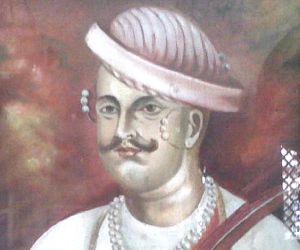
Nana Sahib was born in Bithoor, Uttar Pradesh, in May 1824. Nana Sahib headed a group of enthusiastic rebels in the 1857 insurrection.
He routed the British army in Kanpur and threatened the British camp by assassinating the force's leftovers.
Nana Sahib was an audacious and daring administrator who prepared and led thousands of Indian warriors.
Another name for him was Balaji Bajirao. Chattrapati
Shahu bequeathed the Maratha
Empire to the Peshwas when he died in 1749.
As the Maratha Empire's monarch, Nana Sahib made substantial contributions to the development of Pune. Jules Verne's novel 'The End of Nana Sahib' is a fantastic account of his freedom struggle.
Date of birth: 19 May 1824
Date of death: 24 September 1859
Nick name: Dhondu Pant, Balaji Bajirao
20. Chandra Shekhar Azad:
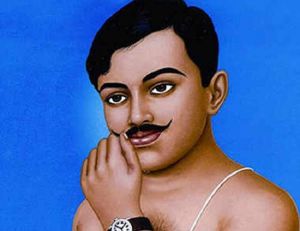
Chandra Shekhar Azad was a close companion of Bhagat Singh in the liberation struggle and was born in Bhavra in 1906.
He was also a member of the Hindustan Republican Association and the most daring and tenacious independence fighter against British authority.
He vowed the British he'd never be caught alive. Azad's full name was Chandrashekhar Tiwari.
At a young age, Azad was dragged into the Indian national struggle. While participating in Gandhi's noncooperation movement at Banares, he was apprehended by the police.
'Chandra Shekhar Azad:
A Biography' is an excellent book on his freedom struggle.
Date of birth: 23 July 1906
Date of death: 27 February 1931
Nick name: Chandra Shekhar Azad
21. C. Rajagopalachari:
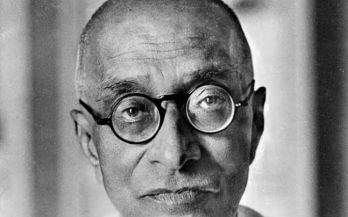
C Rajagopalachari, a lawyer by profession, was born on December 10, 1878, in Thorapalli.
In 1906, he became a respected Congress representative after joining the Indian National Congress.
He endorsed revolutionary P. Varadarajulu Naidu and was a passionate Mahatma Gandhi fan.
He participated in Lajpat Rai's Non-Cooperation Movement as well. CR, Mango of Krishnagiri, and Rajaji were a few of his nicknames. Rajagopalachari was a major political figure in modern India.
As India became a republic in 1950, Rajagopalachari served as the last Governor-General. Rajagopalachari formed the Swatantra Party and was one of India's first Bharat Ratna awardees.
Rajagopalachari: A Role in the Freedom Movement is a well-known book that chronicles his fight for freedom.
Date of birth: 9 December 1878
Date of death: 25 December 1972
Nick name: Rajaji/C.R/ Mootharignar Rajaji
22. Abdul Hafiz Mohamed Barakatullah:
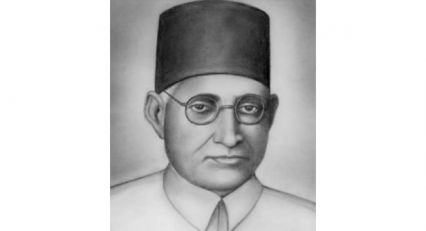
Abdul Hafiz Mohamed Barakatullah, who was born in 1854, is the only person who has fought for the independence of his country.
He was a co-founder of the Ghadar
Party, which was based in San Francisco and operated internationally.
As an overseas revolutionary, he used his writing as a weapon, publishing scathing articles in England's
biggest
newspaper to fan the flames of independence.
On December 1, 1915, he became the first prime minister of the Provisional Government of India, which was founded in Kabul with Raja Mahendra Pratap as its president.
He became a close friend of the Afghan Emir and the editor of the Sirejul-ul-Akber newspaper in Kabul. Russell Jesse's book Abdul Hafiz Mohamed Barakatullah covers his freedom movements.
Date of birth: July 1854
Date of death: 20 September 1927
Nick name: Maulana Barkatullah
23. Subhash Chandra Bose:
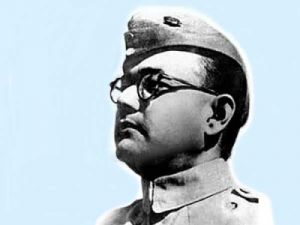
Subhas Chandra Bose was one of the finest Indian liberation fighters in history.
He was born on January 23rd, 1897. Subhas Chandra Bose, also known as Netaji, was a member of the Indian freedom fighters' extreme branch.
He went to Germany for support after becoming dissatisfied with Gandhi Ji's nonviolent technique of emancipation.
He eventually founded the Indian National Army and the Azad Hind Government. He was the originator of the Forward Bloc and managed to elude the British gaze to reach Germany during WWII.
'Bose: The Indian Samurai - Netaji and the INA A Military Assessment' is a fantastic book about his war for independence.
Date of birth: 23 January 1897
Date of death: 18 August 1945
Nick name: Netaji
24. Sukhdev:
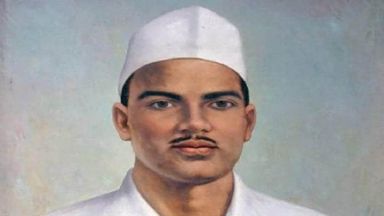
Sukhdev Thapad was born in Ludhiana, Punjab, on May 15, 1907.
He was a fearless revolutionary and an important member of the Hindustan Socialist Republican Association.
He was without a doubt one of the most admired personalities in the Indian independence movement.
He worked closely with Bhagat Singh and Shivram Rajguru, two of his coworkers.
He was suspected of assassinating British
officer
John
Saunders. Sukhdev joined the Naujawan Bharat Seva, which Bhagat Singh had founded in 1926.
They became close friends and business partners. He took part in many initiatives in the Punjab region to foster national consciousness among the country's youth. A.K. Gandhi's famous book "Sukhdev" chronicled his nationalist campaign.
Date of birth: 15 May 1907
Date of death: 23 March 1931
conclusion
Many revolutionary
freedom
warriors, who took the initiative in organizing the campaign that resulted in India's independence, contributed to the achievement of this independence.
People from throughout the nation actively participated in the fight for India's independence from the British.
Thousands of men and women fought united to stop the horrors committed by the British Raj everywhere from Kashmir to Kanyakumari, Assam to Gujarat.
While many people selflessly dedicated their lives to upholding the honour of their nation, others were hurt and chose to serve time in prison.
All Indians remember them for their contributions to the country's freedom movement, even though they held a variety of beliefs from moderate to radical.
From the above article, we get to know about the national leaders of India and about their lives who gave their lives to guarantee India's independence.
I hope you liked our article on freedom fighters of India, if you have any comments or suggestions do share them in the comments below.
Frequently Asked Question
Q1. Who are the top 10 freedom fighters?
We've compiled a list of India's most famous freedom warriors, along with their contributions to the country.
- Mahatma Gandhi was a great leader.
- Subhash Chandra Bose
- Bhagat Singh
- Sardar Patel, Vallabhbhai
- Jawaharlal Nehru.
- Bal Gangadhar Tilak
- Lala Lajpat Rai
- Rani Lakshmi Bai.
- Bipin Chandra Pal
- Pandey Mangal
Q2. Who is the 1st freedom fighter in India?
Mangal Pandey is regarded as first freedom fighter of India. He was a leader of the Sepoy mutiny that led to the 1857 rebellion because it was thought that the Enfield rifles' cartridges were greased with pig and cow fat, which offended Hindus and Muslims.
Q3. Is Bhagat Singh a freedom fighter?
Bhagat Singh was a 23-year-old Indian rebel and independence fighter who was hanged by British colonisers. He is widely regarded as a national hero of India's independence movement against colonial authority and is known as 'Shaheed Bhagat Singh.
Q4. Who is a famous freedom fighter?
Mahatama Gandhi, Netaji Subhas Chandra Bose, Bhagat Singh, Mangal Pandey, and others are probably the most famous liberation warriors, but others contributed to the independence
movement but whose names have faded into obscurity.
Others were inspired and motivated to combat injustice as a result of the work of freedom
fighters. They are the movement's cornerstones.


